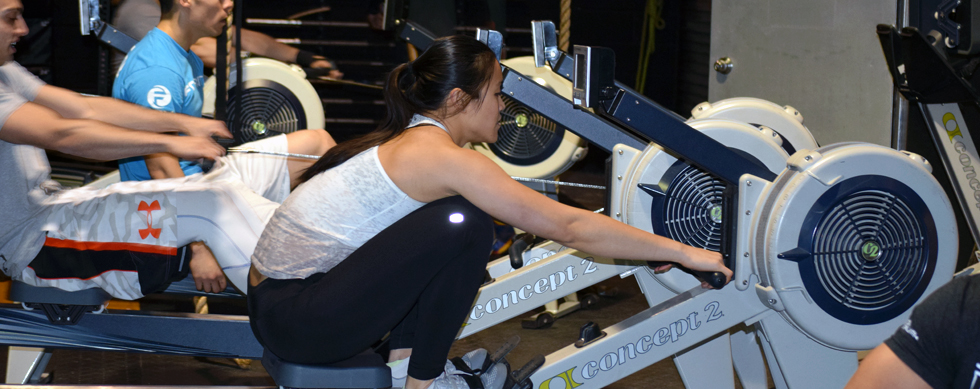June 2015: Athlete Newsletter
It looks simple, but rowing can be tedious, exhausting and even dangerous when it’s not done properly. Make sure you’re set up for safety and success every time you get behind the flywheel by avoiding these eight common rowing mistakes.
1. Failing to tighten the flexfoot straps. Every time you sit down at the rower, take the time to adjust the foot bed and ensure the straps are tight and secure around the ball of your foot. This will allow you to drive from your heels without falling on your ass.
2. Letting the chain go slack. If you hear rattling at any time during your row, you’re rushing through your recovery. Make sure that you keep tension on the chain and let your arms lead the recovery, followed by your legs.
3. Setting the damper too high or too low. Most athletes, depending on their size and ability, should be rowing at a setting between 3 and 5. Not sure which setting is right for you? On the computer’s Main Menu, select “More Options” and then “Display Drag Factor.” Begin rowing. Your ideal drag factor should be between 120 and 130. If it’s lower than 120, bump up the damper setting. If it’s higher than 130, lower it.
4. Grabbing under the seat. You like having fingers, right? The seat rollers that run along the monorail are sharp enough to cut them off. Always adjust the position of the seat by placing your hand on the top of it.
5. T-Rexing the wrists. The tops of your wrists should remain flat and neutral at all times. Bending them will prevent you from getting the most out of your pull and unnecessarily fatigue the smaller muscles in the biceps and forearms.
6. Touching your butt to your heels. When you’re in the catch position, it’s best to keep about a foot of space between your butt and heels. Otherwise, you’ll lose momentum and risk injury to your knees.
7. Leaning too far back on the pull. Overextending at the waist isn’t efficient, and you’ll likely wrench your lower back. Your lean on the pull should be minimal – only slightly past 90 degrees.
8. Slamming the handle against your chest, neck or gut. The handle should lightly touch the base of your sternum, not your neck or stomach. And, it should always remain in motion. If you find yourself with red marks or bruising after a row, you need to lighten your touch.
Are you guilty of any of these rowing faux pas? Ask a coach to check your form and sign up for the next rowing workshop with Coach Iz coming up on August 15th!
Written by: Jenessa Connor






Leave a Reply
Want to join the discussion?Feel free to contribute!